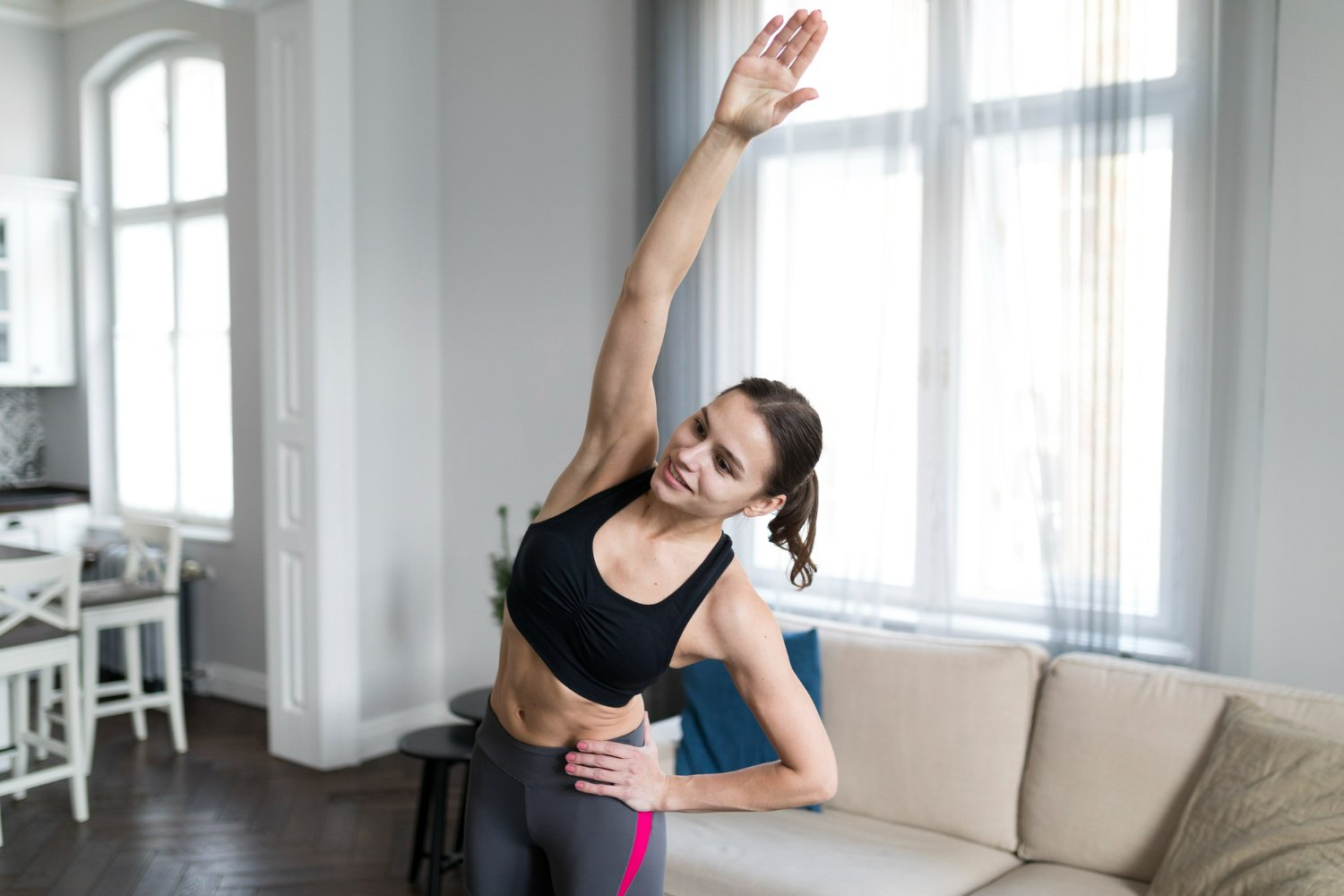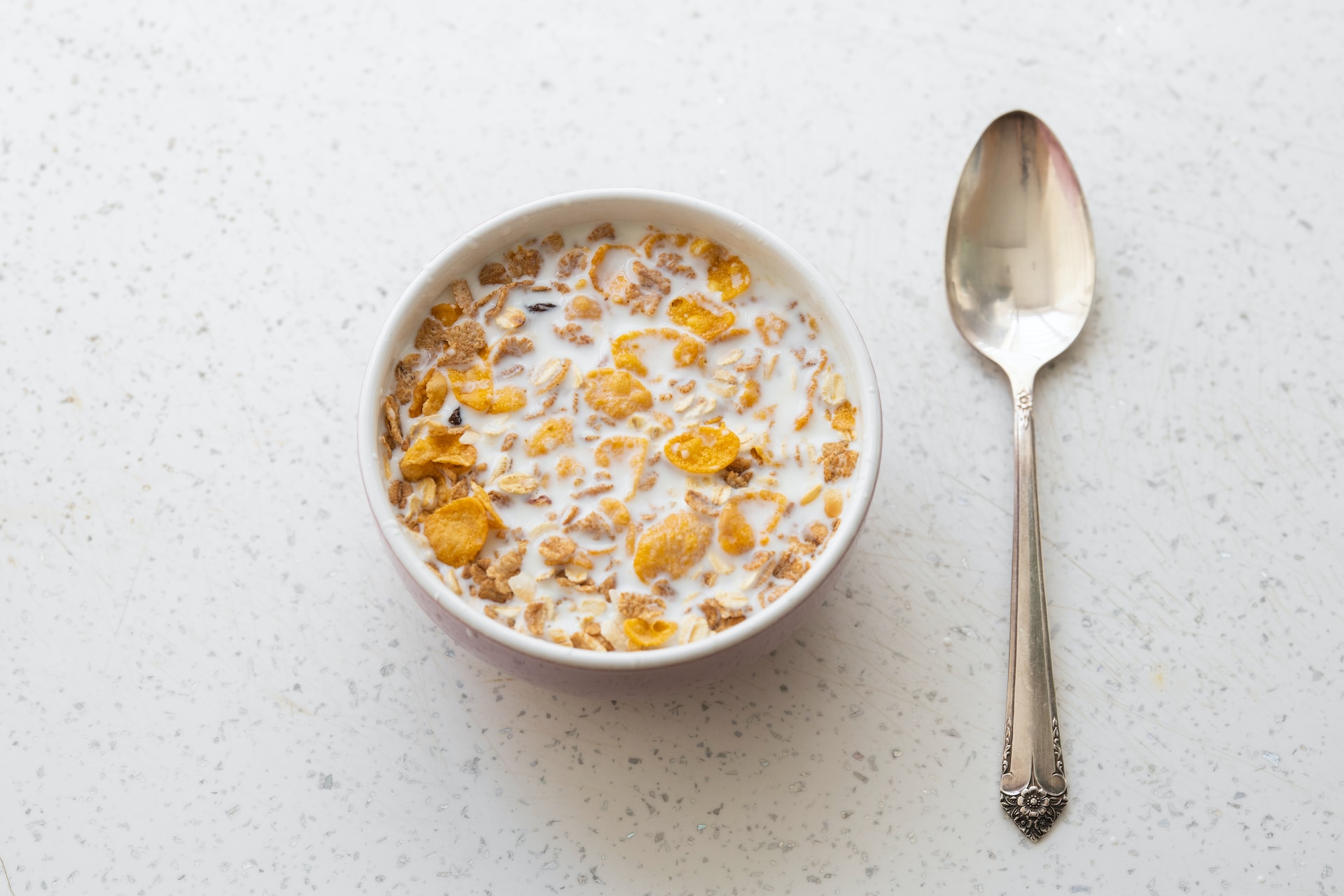When you wake up, do you feel stiff and sluggish? If so, stretching before work can help you wake up your body and mind in the morning. Moreover, stretching in the morning can promote physical and mental wellness.
As our bodies are sedentary all night, we must move and stretch when we wake up to get the blood flowing. In addition, morning stretches can boost energy levels and lift your mood, preventing injuries and easing stiffness. What is the best way to stretch before work in the morning?
This blog post explores 10 morning stretches you can do daily before work. You can perform these stretches in just a few minutes, adding them to your morning routine. Let’s get started!
Billionaire’s 7 Morning Routines for Maximum Productivity
What Are Benefits of Stretching Before Work?
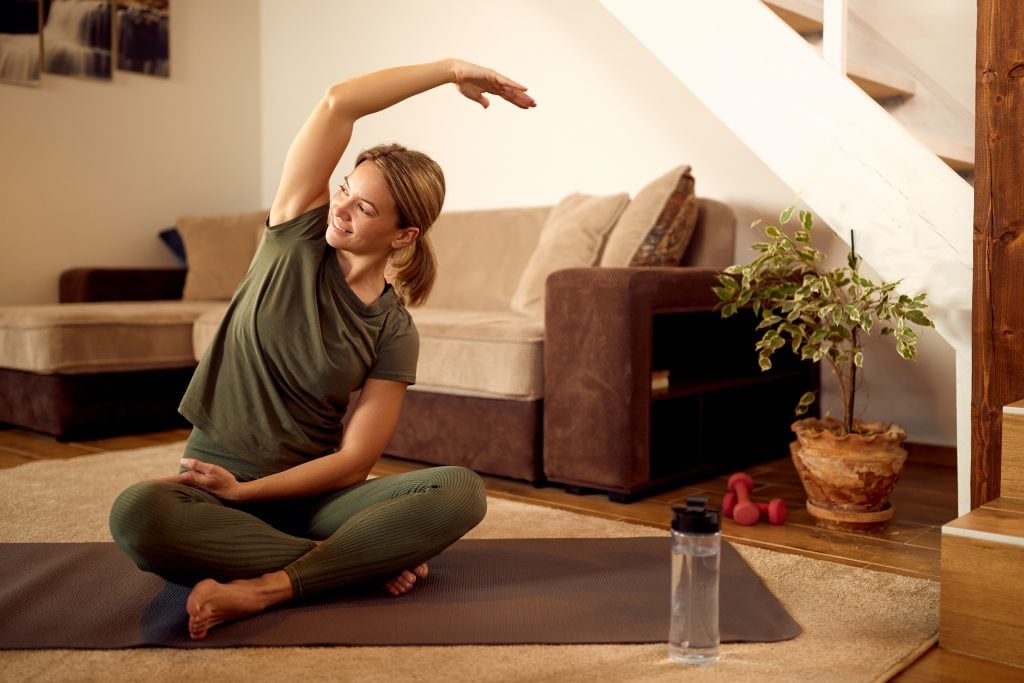
Image by Freepik
Stretching before work can benefit your physical and mental well-being. Following are some of the most significant benefits of stretching:
1. Reduces muscle stiffness and soreness
Sleeping in one position for several hours can cause muscle stiffness and soreness. You can relieve this discomfort by stretching in the morning because it can improve blood flow to your muscles. For example, a simple quad or hamstring stretch can help loosen your leg muscles.
2. Improves posture
Your body can suffer from aches and pains due to poor posture. You can reduce back pain and improve posture by incorporating stretches that target your back, neck, and shoulders. For example, chest stretch or shoulder stretch can help open up your chest and improve your posture.
3. Boosts energy levels
Stretching before work can improve blood flow throughout the body, giving you a natural energy boost. For example, a few minutes of sun salutations can get your blood flowing and help wake you up.
4. Reduces stress and anxiety
When you stretch before work, you can reduce stress and anxiety levels and improve your overall mood. You can reduce stress and calm your mind by taking deep breaths during forward folds or downward dogs.
5. Decreases the risk of injury
Stretching before work increases the range of motion and flexibility, reducing the risk of injury during your activities. For example, a simple calf stretch can prevent injuries while running or walking.
These benefits of stretching can make a big difference in your mental and physical health. Therefore, take a few minutes to stretch each morning to live a healthier, more fulfilling life!
What Are Different Types of Stretching?
Following are the different types of stretching that you should be aware of.
1. Static Stretching
Static stretching involves holding a stretch in one position for a while, usually 30 seconds to 2 minutes. As a result of this stretching, you can increase your range of motion, improve your flexibility, and release tension in your muscles. Following a light warm-up or exercise, you should perform static stretches after your muscles have warmed up.
2. Dynamic Stretching
A dynamic stretch involves moving your body in a controlled manner through a range of motion. In addition to improving flexibility, stretches like these improve blood flow and prepare your muscles for physical activity. Performing dynamic stretching before any physical activity helps warm up your muscles and reduces injury risk.
3. Active Stretching
An active stretch involves contracting the stretched muscle and holding it for a few seconds before releasing it. Stretching like this helps develop flexibility and prepares the muscles for physical activity. You can do active stretching anytime, but it’s especially effective when you warm up.
4. Passive Stretching
The passive method involves stretching deeper into a pose with the help of an external force, like a strap or a partner. While this type of stretching can increase flexibility, it’s important not to overdo it. Typically, passive stretching comes after a workout or as part of a cool-down.
5. Ballistic Stretching
You bounce or jerk your muscles beyond their normal range during ballistic stretching. It’s not recommended for beginners or people with tight muscles or injuries since it can cause muscle strains and tears.
6. PNF Stretching
With PNF stretching, you contract and relax the stretched muscles while your partner helps you. You can increase your flexibility and range of motion with this type of stretching. PNF stretching is typically performed after a warm-up or as part of a cool-down routine.
7. Isometric Stretching
The isometric stretch is performed without moving but is usually longer than static stretching. This type of stretching makes you get a strength and flexibility. Usually, isometric stretching comes after a warm-up or during a cool-down.
Adding various stretching types to your morning routine can promote physical and mental wellness. However, you should listen to your body and adjust your stretching routine accordingly.
10 Best Morning Stretching Before Work
Here are 10 stretches you can do in the morning before work, along with instructions, tips, and benefits of stretching:
1. Neck Roll

Image by Freepik
When performing the Neck Roll stretch, you should sit or stand with a straight spine and relaxed shoulders. Slowly lower your head forward, letting your chin touch your chest. Rotate your head to the right, bringing your right ear toward your right shoulder.
Continually roll your head backward until you are looking up at the ceiling. As you complete the circle, bring your left ear toward your left shoulder. Repeat the movement in the opposite direction, starting by rolling your head to the left.
Tips
It is essential to keep your shoulders relaxed while performing the Neck Roll stretch. Take your time and go slowly and gently so you don’t injure yourself.
Benefits
Among the benefits of the Neck Roll stretch are:
- It relieves tension in the neck muscles, which can become tight due to stress and long periods of sitting or standing.
- It improves concentration and reduces headaches by increasing blood flow to the neck.
- Improves posture by stretching the muscles of the head and neck.
2. Shoulder Roll
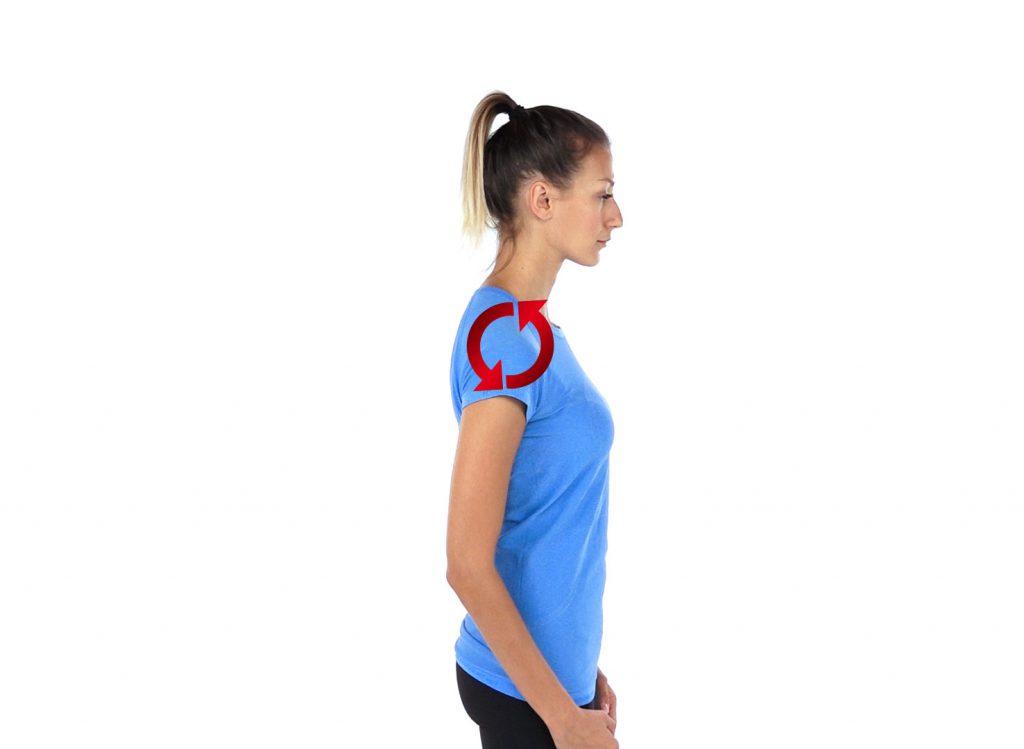
Image by Hospital of St John & St Elizabeth
Start by sitting or standing with your arms by your sides. Then, slowly lift your shoulders toward your ears, then roll them backward and down, squeezing your shoulder blades together. Complete a full circle by moving your shoulders forward, upward, and backward. By proceeding with your shoulders back, reverse the movement.
Tips
When stretching your Shoulder Roll, keep your arms relaxed. When performing the movement, avoid shrugging your shoulders up toward your ears.
Benefits
Shoulder Rolls offer a variety of benefits, such as:
- It helps relieve shoulder tension, which can become tight from stress and poor posture.
- It increases shoulder flexibility, so you can easily reach for stuff on high shelves and carry heavy bags.
- It improves circulation to the shoulder area, which reduces inflammation and pain.
3. Upper Back Stretch

Image by Freepik
Start by sitting straight in a chair or standing with your feet shoulder-width apart. You should interlace your fingers and reach your hands forward away from your body, while rounding your upper back and extending your arms. Take a few deep breaths, then release the stretch.
Tips
Keep your shoulders relaxed and your chin tucked in as you perform the Upper Back Stretch. Keep your shoulders from hunching forward or your back from arching.
Benefits
Among the benefits of the Upper Back Stretch are the following:
- Relieves tension in the upper back and neck that can get tight after sitting or standing for a long time.
- It encourages the upper back to remain upright and improves posture.
- It enhances the range of motion in the upper back and shoulders, making lifting and carrying more accessible.
4. Spinal Twist

Image by Yoga 2 Hear
Start by sitting straight in a chair or on the floor with your legs crossed. Place your left hand on your right knee and your right hand behind your back. Take a deep breath and lengthen your spine, then exhale and turn your torso to the right while looking over your right shoulder. Take a few deep breaths, then release and repeat on the other side.
Tips
When performing a Spinal Twist, keep your shoulders relaxed and your chin parallel to the floor. Avoid forcing your twist or rounding your spine.
Benefits
The spinal twist has many benefits, including:
- It enhances spinal mobility and flexibility, which can get limited from sitting or standing too long.
- It helps digestion and detoxification by massaging and stimulating the internal organs.
- It reduces stress and tension in the back, neck, and shoulders.
5. Side Stretch
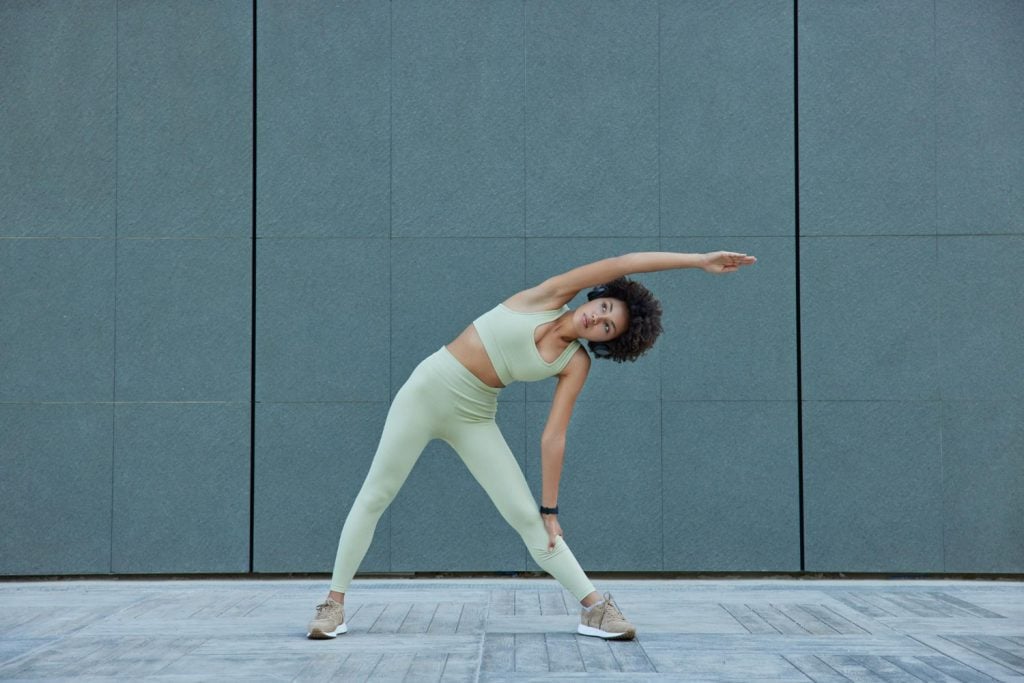
Image by Freepik
Start by standing shoulder-width apart and keeping your arms by your sides. Inhale and lift your arms overhead, interlocking your fingers and pressing your palms up. Take a few deep breaths and lean your torso to the right, not forward or backward. Return to the center and repeat on the left side.
Tips
Keep your shoulders relaxed and your chin parallel to the ground when performing the Side Stretch. Do not arch your back or collapse your chest.
Benefits
Among the benefits of the Side Stretch are:
- Floats the side body, which can get tight from prolonged standing or sitting.
- Increases lung capacity and improves breathing by opening up the chest.
- Promotes good posture by strengthening the muscles of the back and core.
- Relieves tension in the neck and shoulders, reducing stress and promoting relaxation.
6. Chest Stretch
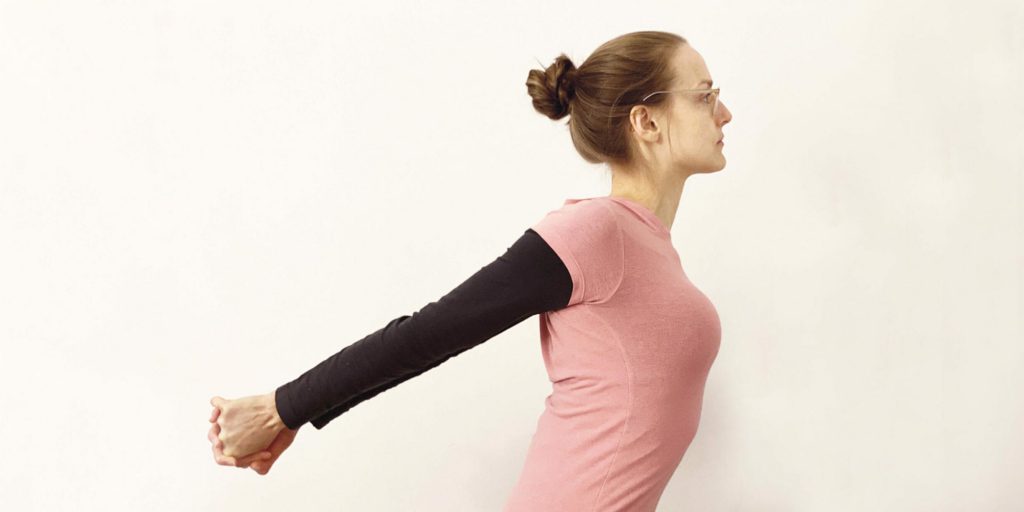
Image by Public goods
Stand with your feet shoulder-width apart and interlace your fingers behind your back. Gently straighten your arms and lift them behind you, squeezing your shoulder blades together. Then take a few deep breaths before releasing the stretch.
Tips
You can increase the stretch by raising your arms higher or tilting your head back. You should avoid arching your back or straining your neck.
Benefits
Among the benefits of the Chest Stretch are the following:
- It stretches the chest muscles, which can become tight from prolonged sitting or hunching.
- Improves posture by opening up the chest and shoulders.
- It improves the upper body’s range of motion and reduces shoulder and neck pain.
- It helps you breathe deeper by expanding your chest and making filling your lungs easier.
7. Hamstring Stretch
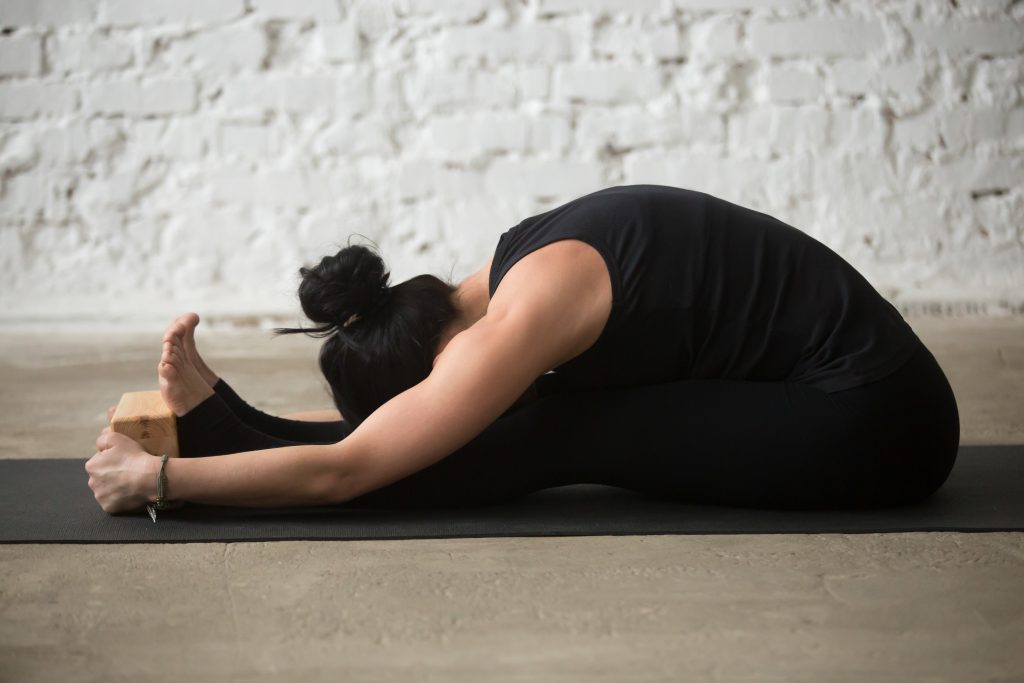
Image by Freepik
Start by sitting on the floor with your legs straight out in front of you. Reach forward and grab your toes or the balls of your feet while keeping your back straight. While keeping your knees straight, gently pull your torso toward your legs. Before releasing the stretch, take a few deep breaths.
Tips
You should avoid bouncing or jerking when stretching. You can use a towel or yoga strap to help you reach your toes.
Benefits
Benefits of Hamstring Stretches include:
- It stretches the hamstrings, which can become tight from prolonged standing or sitting.
- It improves flexibility and range of motion in the legs and lower back.
- It enhances muscle elasticity and reduces the risk of injury.
- Promotes good posture by strengthening the lower back and core muscles.
8. Pigeon Pose
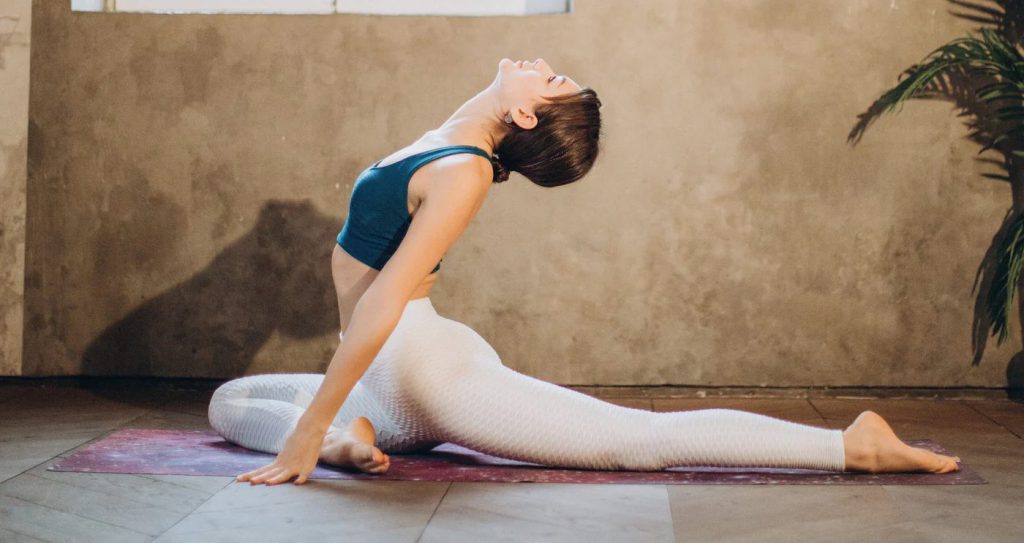
Image by Yoga society
You should start on all fours, with your hands shoulder-width apart and your knees hip-width apart. Bring your right knee forward and place it behind your right wrist. Slide your left leg back and straighten it behind you.
You should have your right foot flexed and your left leg extended behind you. Slowly lower your upper body over your right knee, keeping your arms straight in front of you for support. Hold the stretch for a few deep breaths before switching sides.
Tips
You can place a folded towel or blanket under your hips if you have knee or hip problems. Adjust your foot and ankle position if you feel any pain or discomfort in your knee.
Benefits
Among the benefits of the Pigeon Pose are:
- Stretches the hip flexors, glutes, and lower back muscles, which can become tight from prolonged sitting or standing.
- It enhances hip and leg flexibility, improving mobility and reducing injury risk.
- Relieves lower back and hip tension, which can reduce discomfort and improve posture.
- It reduces stress and anxiety and calms the mind.
9. Quad Stretch
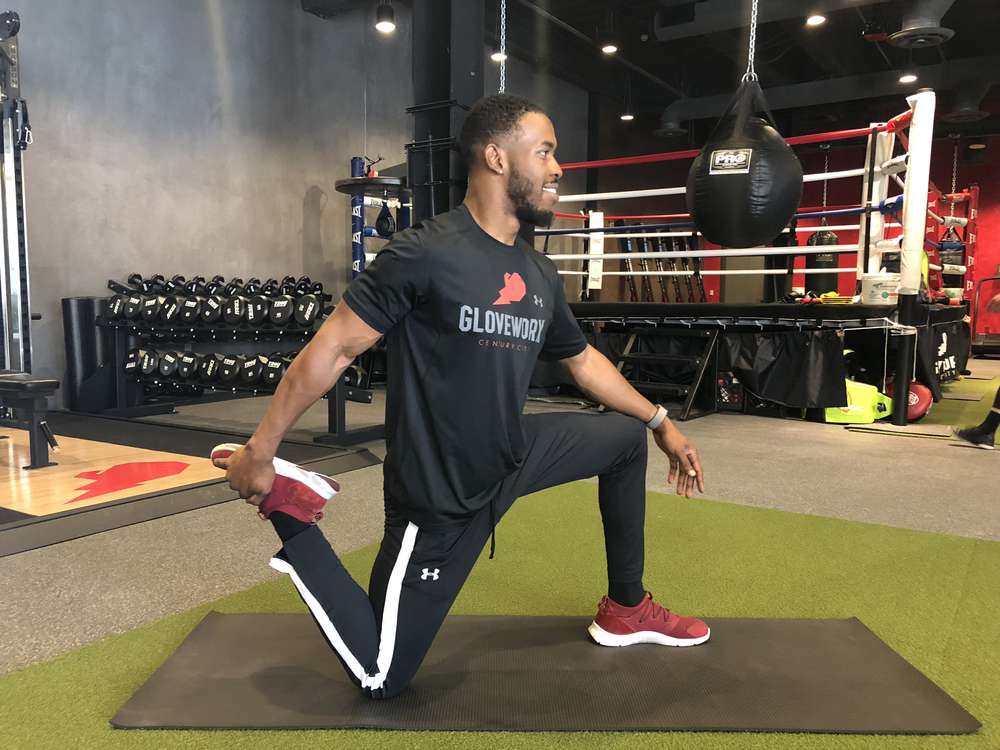
Image by Gloveworx
Stand upright with your feet hip-width apart. Take a step forward with your right foot, bending your knee to 90 degrees. Then, keep your left leg straight and your foot flat on the ground.
Slowly reach behind you and grab your left ankle with your left hand. Pull your ankle towards your buttocks until you feel a stretch in your left quadriceps. Before switching sides, hold the stretch for a few deep breaths.
Tips
Keep your knees close to each other during the stretch to avoid shifting your hips. Place your hand on a wall or chair if you struggle with balancing.
Benefits
Among the benefits of the Quad Stretch are the following:
- It stretches the quadriceps muscles, which can get tight from standing or sitting for a long time.
- Reduces injury risk and enhances mobility by increasing leg flexibility.
- Enhances balance and stability by strengthening the legs and core muscles.
- By improving knee joint strength and flexibility, it can reduce knee pain.
10. Downward Dog
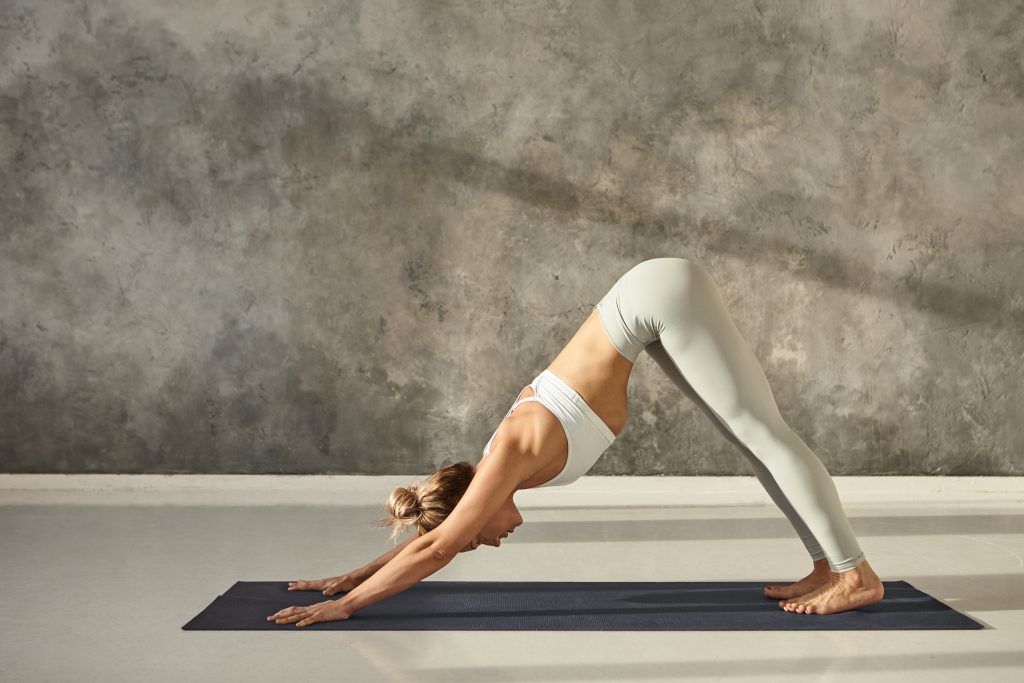
Image by Freepik
Put your hands slightly in front of your shoulders and your knees directly below your hips. Spread your fingers and press your palms into the ground. Curl your toes under and lift your hips up and back, straightening your arms and legs to form an inverted “V” shape with your body. Relax your head and neck, and press your heels towards the floor. Hold the pose for a few deep breaths.
Tips
For people with tight hamstrings or lower back pain, bend the knees slightly to ease into the pose. While keeping your arms and legs straight, walk your feet toward your hands to deepen your hamstring stretch.
Benefits
Downward Dog has several benefits, such as:
- Boosts flexibility and reduces stiffness in the hamstrings, calves, and spine.
- It strengthens the arms, shoulders, and wrists, improving upper body strength and posture.
- Relaxes the lower back muscles and stretches the spine.
- It relaxes the mind and reduces stress.
FAQs
What is the safest type of stretch?
How long should you stretch after a workout?
The Takeaway
A morning workout can be energizing and effective for keeping your fitness routine. However, it all begins with waking up early in the morning. A morning workout will give you a boost of energy and fresh air to kickstart your day.
If you have an oversleeping problem and can’t wake up early, you might want to try the Alarmy a smart alarm clock app. You can customize your alarm settings and wake up to the sounds you like. So, with Alarmy, you can get up on time and do your morning stretches. Alarmy makes you take benefits of stretching every morning.
Get Alarmy on App Store and Google Play!
To sum it up, stretching before work in the morning can help you prepare for your day. Just a few minutes of stretching can improve blood flow to your muscles, improve flexibility, and reduce injury risks. But most importantly, listen to your body and stretch at your own pace. Hopefully, the list of morning stretching we discussed above will help you choose the right one.
